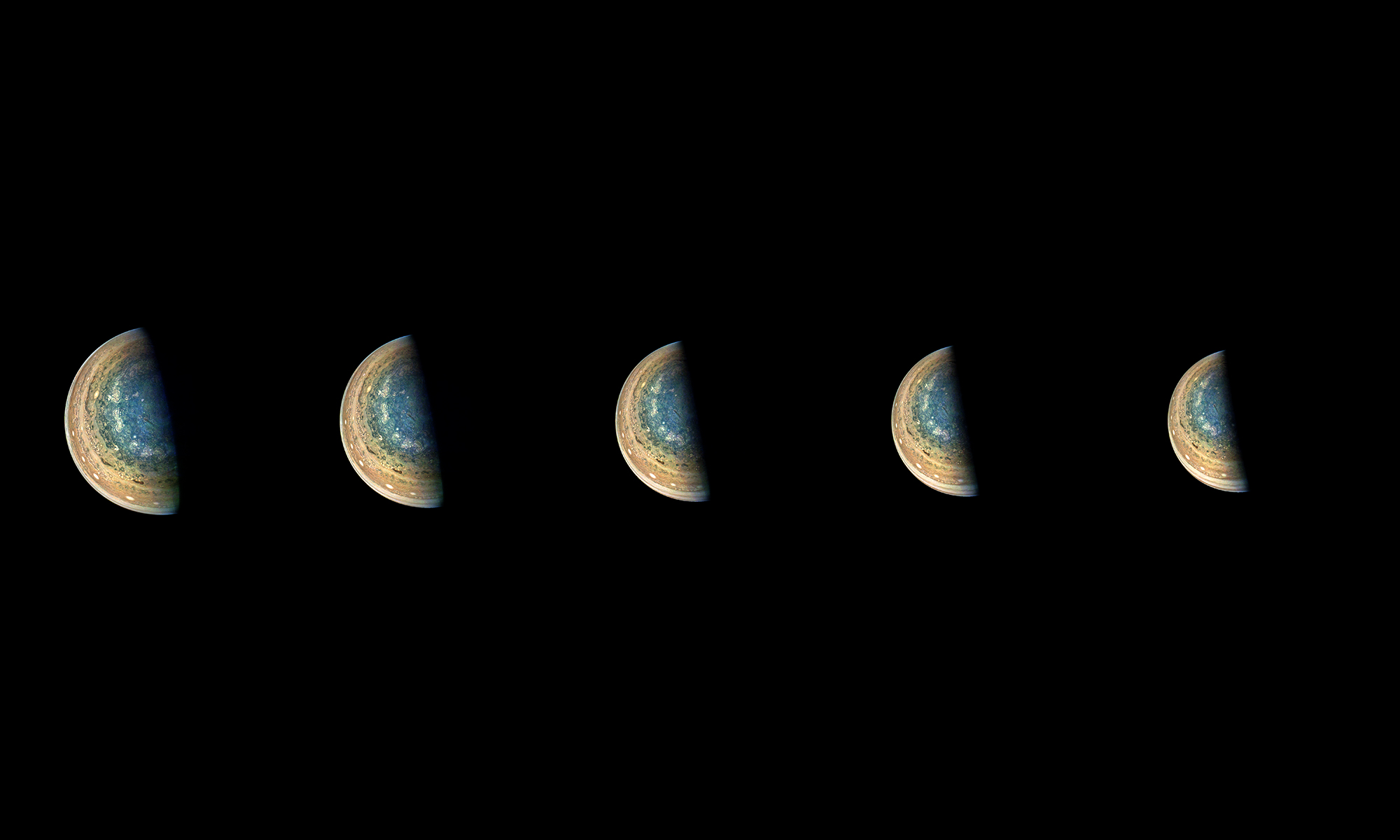See Jupiter's South Pole Change Over Time in Incredible Time-Lapse View

You've never seen Jupiter's south pole quite like this.
A new photo by NASA's Juno spacecraft show Jupiter's south pole as seen from above during a recent close encounter on Feb. 7. The photo is actually a series of images taken over time by Juno as the probe whipped around Jupiter during its 11th flyby of the giant planet.
"At first glance, the series might appear to be the same image repeated," NASA officials wrote in an image description. "But closer inspection reveals slight changes, which are most easily noticed by comparing the far left image with the far right image." [Amazing Jupiter Photos by NASA's Juno Spacecraft]
The time-lapse views of Jupiter were taken over a 40-minute period on Feb. 7, starting at 10:21 a.m. EST (1521 GMT), as Juno passed over Jupiter's south pole. Juno took the photos from distances ranging from 85,292 to 124,856 miles (137,264 to 200,937 kilometers).
"Directly, the images show Jupiter. But, through slight variations in the images, they indirectly capture the motion of the Juno spacecraft itself, once again swinging around a giant planet hundreds of millions of miles from Earth," NASA officials wrote in the image description.
Juno captured the photos with its JunoCam instrument. Those raw images were then processed by citizen scientist Gerald Eichstädt and assembled into the time-lapse series seen here. Juno's raw images are posted online as they are taken; the public can then review and process these images into amazing (and sometimes strange) views of Jupiter. You can access the JunoCam images here.
NASA launched the $1.1 billion Juno mission in 2011, and the spacecraft arrived in orbit around Jupiter on July 4, 2016. The spacecraft takes 53 days to make one orbit of Jupiter. That extreme orbit brings the probe within 3,100 miles (5,000 km) of Jupiter's cloud tops at the closest point.
Breaking space news, the latest updates on rocket launches, skywatching events and more!
Email Tariq Malik at tmalik@space.com or follow him @tariqjmalik and Google+. Follow us @Spacedotcom, Facebook and Google+. Original article on Space.com.

Tariq is the award-winning Editor-in-Chief of Space.com and joined the team in 2001. He covers human spaceflight, as well as skywatching and entertainment. He became Space.com's Editor-in-Chief in 2019. Before joining Space.com, Tariq was a staff reporter for The Los Angeles Times covering education and city beats in La Habra, Fullerton and Huntington Beach. He's a recipient of the 2022 Harry Kolcum Award for excellence in space reporting and the 2025 Space Pioneer Award from the National Space Society. He is an Eagle Scout and Space Camp alum with journalism degrees from the USC and NYU. You can find Tariq at Space.com and as the co-host to the This Week In Space podcast on the TWiT network. To see his latest project, you can follow Tariq on Twitter @tariqjmalik.
